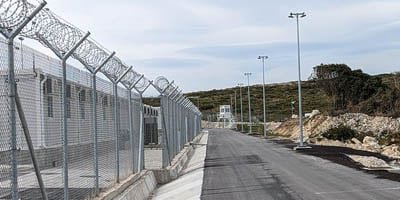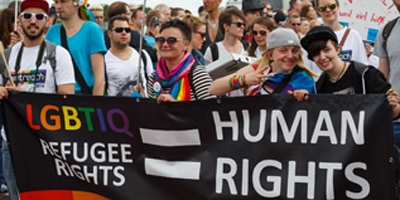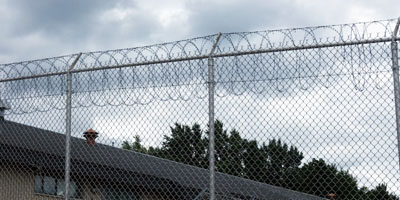Listen to the companion podcast here
“People are literally dying,” Imad Satti said as he talked about his family and fellow countrymen in Sudan. The spokesperson for the Sudanese Canadian Community Association, he described his stressful reality as a diaspora member, trying to save his loved ones from war, famine and illness.
Although physically safe in Canada, his home since 2002, mentally Satti remains focused on Sudan. His country of origin, where he lived until he was nineteen years old, is now a place where his friends and family are trapped. He also thinks about those he was not close to who also need help, like neighbours and people he met at university. All of these people’s precarious situations weigh heavily on his mind. This sense of responsibility is felt by many members of the Sudanese diaspora, but there is only so much that individuals can do.
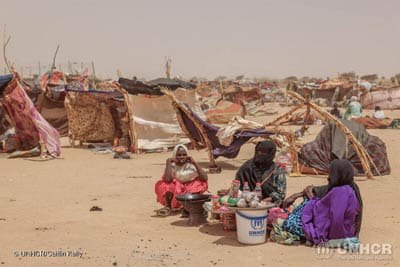
“I need to help them,” he repeated throughout the interview, and his priority is the safety and well-being of his siblings and their children, who have been out of school due to the war. However, interminable administrative delays, unrealistic biometric requirements, and the lack of pressure from the international community to stop the war are obstacles he cannot overcome alone.
The “worst humanitarian crisis on Earth”
Despite Sudan being described as the “most devastating humanitarian and displacement crisis in the world” by the United Nations, the Canadian asylum process is riddled with inefficiencies, leaving the Sudanese diaspora to fend for itself.
From 1989 to 2019, Sudan was presided by Omar al-Bashir, who is accused by the International Criminal Court (ICC) of crimes against humanity, including genocide. His thirty-year reign came to an end with the 2021 coup. Since then, Sudan had been ruled by a strained military dictatorship. In April 2023, open armed conflict broke out between the Sudanese Armed Forces (SA), led by General Abdel Fattah al-Burhan, and the Rapid Support Forces (RSF), headed by General Mhomed Hamdan Dagalo. According to the BBC, the splitting of government occurred because of discord over the integration of the RSF within the country’s army and both generals’ hopes of clinging to power.
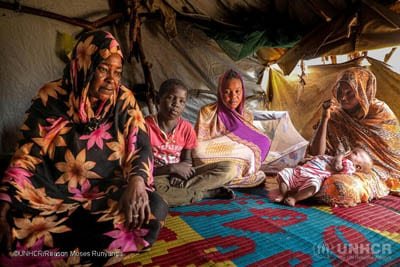
The fighting between these factions had terrible effects on the Sudanese people. For one, the RSF is recognized by several countries and agencies as conducting genocide on non-Arab populations, a legacy they inherited from their predecessor, the Janjaweed (the name translating to “Devils on Horsebacks”). Moreover, the conflict destroyed homes, livelihoods, and disturbed millions of lives. The UNHCR (the United Nations’ Refugee Agency) reports staggering numbers:
- Half of all Sudanese are in need of help, and severe scarcity of basic necessities such as food and medical supplies are a daily reality in Sudan.
- The displacement toll has risen to 13 million people since the beginning of the conflict. The UN estimates that this is a third of the population.
While these conditions are detrimental to every Sudanese, women and children are even more vulnerable than others. Women are more prone to be victims of sexual and gender-based violence. As for children, their development is compromised by their inability to go to school during the crisis. This will surely leave long-lasting impacts on the fabric of Sudanese society.
In response to the situation, Canada has opened limited pathways to welcome Sudanese refugees. In its official statements, the Canadian government claimed to have embraced a “leadership role” within the international community to alleviate the crisis. Domestically, Canada has promised approximately 4,700 spaces for Sudanese refugees through three arrangements: “Group of five and community sponsors” (now closed), “Sponsorship Agreement Holders” and “Government-assisted refugees”.
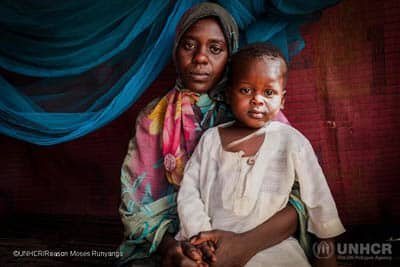
Private sponsorships place an enormous financial burden on the Sudanese Canadian diaspora. Sponsors must set aside $9,000 per supported person to prove their eligibility to take care of the expected newcomers. Satti described the repercussions of the financial aspects of the program on sponsors, saying that, in particular, the delays in bringing sponsored individuals and families to Canada puts their lives in a holding pattern: “This money is just sitting in the bank. You cannot generate interest on it because you cannot invest it. Some people have small businesses, from which they took out the money. They were thinking, ‘Okay, after three months my family will be here and I can use the money and continue my business.’ But, now they are stuck because of delays. $50,000 – $60,000 is not a small amount of money to keep in the bank for nothing. We still don’t know how long it will be sitting there.”
Inconsistencies: biometrics and treatment
Throughout my interviews, three criticisms of the Canadian response were brought up consistently: the small scale of the response in comparison to the help offered in other humanitarian crises, the delays pervading the entire immigration process, and the inaccessibility of required biometric documents
Sudanese nationals wanting to reach safety in Canada through immigration pathways must provide biometric documents including fingerprints and facial scans. Moreover, in preparation for their biometrics appointment, people are expected to bring certain documents such as a passport. The main issue with this policy is the absence of biometric centers in Sudan. Karina Juma, who was an articling student when we spoke and is now a Canadian Immigration & Refugee Lawyer at Heron Law Offices, described this aspect to me. “The visa application center in Khartoum is closed,” she said. “Since the conflict started to worsen in April 2023, Canada basically shut down its operations in Sudan.” This means that anybody who needs to get biometrics has to go to another country to have them done. But it is potentially very expensive for them to leave, and also very dangerous, because there might not be a safe way for them to leave and then to come back.”

The Canadian government’s insistence on biometrics is frustrating for Satti. He pointed out that he never had to do any biometrics when he immigrated to Canada in 2002. “Why isn’t my sibling or any person from Sudan treated in the same way I was?” he asked. Moreover, he suggested that the government could modify the system to have Sudanese asylum seekers get their biometrics done upon arrival. This would allow them to escape war and fulfill the Canadian requirements.
Juma also touched on the administrative difficulties of traveling for asylum seekers. “They’re potentially finding themselves stuck outside of Sudan once they leave, or they may not have the proper travel documents. In the past two years, people’s passports may have expired, they may have been stolen during lootings, they might have been lost or damaged, and they might have difficulty obtaining new ones from the government due to the political situation in Sudan right now.”
Satti further emphasizes the reality of Sudanese wanting to leave their country. “It’s been 12 months since the program opened last February 2024 and now it’s February 2025. Nothing has been done for them because of this biometric requirement. The Canadian government, along with the UN or IOM (the International Organization for Migration), are supposed to open a biometric center, but it hasn’t been opened yet. So all the people are stuck because of this issue.”
Satti also stressed that such delays and malfunctions are incompatible with the urgency of the situation. He hopes the Canadian government will alter its requirements by allowing refugees to complete them upon arrival in Canada. Furthermore, Satti noted that many people who have been able to complete the biometrics have still not heard back from the government.

Duha Elmardi, a Sudanese community organizer in Montreal, agrees with Satti’s observations. In 2018, she was in the United States, completing an internship when another wave of protests began to shake Sudan. Unable to go back home, Elmardi fled to Canada through the Roxham Road unofficial option that same year, due to increasing xenophobic attacks. Like Satti, she is now one of the many Sudanese Canadians who have applied for their family members to be allowed in the country. Adding on to the topic of delays, Elmardi said, “We’ve seen such a slow response in terms of actually moving paperwork. Out of 3,250 applications, only 800 applications have actually been approved. Out of those 800 approved applications, 214 people have come to Canada through this last year and the rest of them are still waiting for processing. It is not being dealt with as an emergency program.”
While all three interviewees spoke about the administrative problems, some also touched on the differential treatment between Sudanese immigrants and those from other countries. In response to the Ukraine-Russia war, Canada settled over 300,000 Ukrainians in record time. “We have really seen what the Canadian government can do when the war in Ukraine started. It’s a great response,” Elmardi said. “And that is the response that we had hoped would happen to the Palestinians, would happen to the Afghans, would happen to the Colombians, to the Haitians, to the Sudanese. But that wasn’t the case, and it was too far of a difference, really. You could really see the kind of discrimination and who’s deemed as a desirable refugee, a refugee that is welcomed, and who is a refugee that is not welcomed.”
Juma thinks that there may be many reasons behind this uneven distribution of support. “Maybe it’s politically motivated, maybe because of the representation of the different diasporas. Canada has a huge Syrian community, so that may be one of the reasons why we see a lot more uptake in Syrian refugees. Same with Ukrainians. Canada has a long history and relationship with Ukraine.”
When I asked Juma her thoughts about how the government chooses how many immigrants it will allow, she said, “The government decides ultimately what number to allocate. And some of it can be completely random. Some of it could be targeted. It’s just based on what the government feels is appropriate at that time. And that’s not to say that the number right now for Sudanese can’t grow. It has increased, but only after a lot of pressure was applied by the Sudanese diaspora in Canada to say ‘this is not enough, we need more spaces’”.
Advocacy through community action
The unrealistic requirements, delays and low number of places in the Canadian response have created tensions between the diaspora and the government. Recently, the former’s efforts to create mounting pressure on the government to rectify its policy have been fruitful. Indeed, in April 2024, the government expanded the amount of spots available through the family-based program from 3,250 to 5,000.
In order to build a wider base of support for the Sudanese refugees, the diaspora engages in numerous activities. For example, Elmardi said that Sudanese organizers and activists have used the arts as a tool of resistance to the authorities within Sudan, and as a way to further educate people and build stronger communities outside of the country. She gave the example of protest chants, referred to as “callings” in Sudan. “The callings that we have in the revolution, but also in the previous waves of uprisings and protests, are often inspired by older chants that we’ve had from poets like Hamid or Mahjoub Sharif. And you’re seeing them being recycled and used again.” Moreover, she recommended watching “Sudan, Remember Us,” a movie directed by Hind Meddeb, which delves into the function of art and chants in Sudan’s protest movements. Elmardi also recommended several artists such as Alaa Satir, Galal Youssef and Enas Satir who engage in diasporic political art.
Concurrently, Satti emphasized how the media can also magnify their cause. In his view “The media is one main channel to bring information, to educate people. In general, citizens are good people, with good hearts, and who are willing to help. But many of them have no idea what’s going on. The media should bring more attention to this conflict.”
In various articles about Sudan, the authors designated it as “the forgotten conflict” due to the lack of media attention the conflict gets in comparison to other wars such as the ones in Gaza and Ukraine. While it is true that Sudan is less mentioned than Gaza, how do Sudanese activists feel about it? Is the coverage of Gaza really a hindrance? Elmardi doesn’t see it that way. “Yes, the movement to free Palestine has brought attention to Sudan, to Congo, Haiti and other parts of the world,” she said. “I have seen so many comrades and friends challenge the “Forgotten War” narrative, and I definitely agree with them. It is not forgotten by us, it is not forgotten by the Sudanese people at all. It is intentionally ignored by the international community.”
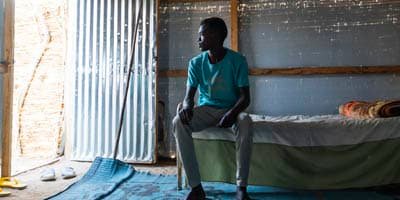
Photo from the Dougui refugee settlement, approximately 110 km from the border town of Adré. It is being used to relocate a portion of the over 200,000 refugees still residing at the spontaneous site in Adré. Photo by Ala Kheir, courtesy of the UNHCR.
